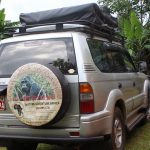Suitable 4×4 Self Drive Jeeps to Ride in East Africa

A key aspect of getting the most out of a trip is to choose the mode of travel which best suits each region. Some countries are ideally suited for self-drive, whilst others are eminently unsuitable.
The main downside is that most of the best and most remote areas are not easily accessible to self-drivers, either because they are too far away to reach, they are too dangerous or they are private and not open to the public.
This means that most self-drive trips are obliged to stick to a core of busy mainstream locations.
Down are the 4×4 self-drive jeeps to ride in East Africa.
4×4 Land Cruise TZ Prado, 4×4 Land Cruiser GX, 4×4 Land Cruiser V8, Land Cruiser Hard Top, all reliable and widely used 4WD vehicles in East Africa. All our 4×4 cars are in perfect mechanical condition, comprehensively insured, and air-conditioned.
The company offers 24-hour road assistance and free delivery to Entebbe Airport and hotels but for those who are within or around the nearby capital city of that country and Entebbe.
We assist you with hotel reservations, gorilla trekking, and Chimpanzee permits. For camping safari in Uganda, Kenya, Rwanda, or Tanzania, we have clean camping equipment with portable tents and roof-top tents accommodating 2 people for fantastic road trips in East Africa.
A big discount is available for long-term rental. We provide all documents to allow you to cross International Borders to Kenya, Rwanda, Burundi, Democratic Republic of Congo and Tanzania. Below are some of our top 4×4 cars hire in East Africa and we offer such cars with the 4×4 rooftop tent cars offering ease stay in the Uganda wilderness.
Driving Requirements
To drive in East Africa, you will need a valid driver’s license from your home country and an international driving permit with at least an experience of two years of driving. While many drivers in East Africa drive without insurance, it’s a good idea to have at least minimal coverage. Purchase it from your rental agency or use the included insurance on your travel credit card. If you plan to do the latter, check with your credit card company before the trip. Keep a copy of your proof of insurance, along with the registration and a copy of the rental contract, in the car.
Checklist for driving in East Africa
- Valid driver’s license
- International driving permit
- Vehicle registration document
- Proof of insurance
- A contract from the rental company
Rules of the Road
Stay aware and drive defensively, as many drivers throughout tend to ignore traffic regulations. While traffic laws are followed more closely in the larger cities, drivers tend to drive fast and tailgate.
In rural areas, drivers (especially truckers familiar with driving these routes) are known for reckless overtaking. As long as you exercise caution, keep your headlights on, and your seat belt fastened, you’ll greatly decrease your chances of having any issues on the road.
- Seat belts: East Africa law requires all passengers to wear seat belts.
- Drinking and driving: Drinking While Driving Increases Your Risk of Being in an Accident. Perhaps the biggest reason to not drink and drive is that doing so significantly increases your risk of being in an accident, and therefore your risk of causing injury to yourself or to another person
- Headlights: You must keep your headlights on when driving at all times. If they are off, even during the daytime, the police will pull you over and fine you. Headlights and their light sources are thus vehicle components that are relevant to safety.
- Gas stations: If driving outside of cities, stop to get gas whenever you see a station. In the countryside, gas stations are not abundant, especially in the rural areas.
- Speed limits: Speed limits vary. Drive according to the road signs. Speed limits are generally indicated on a traffic sign reflecting the maximum permitted speed – expressed as kilometres per hour (km/h) and/or miles per hour (mph). Speed limits are commonly set by the legislative bodies of national or provincial governments and enforced by national or regional police and judicial authorities.
- Cell phones: Except for using a hands-free kit, using a cell phone while driving is illegal; however, this rule is frequently ignored.
In an emergency: If you need to reach emergency services contact the provider for the vehicle or in case of an accident inform the police and the provider of the car.






0 Comments